Headstage Connection Guide
Overview
Ground and Reference placement is important in all headstage configurations. They determine the operation of the headstage and can, if incorrectly wired, produce undesired results.
Important
High channel count recordings (implemented either with PZ or multiple Medusa preamplifiers) may be implemented using multiple headstages. When using multiple headstages, ground pins on all headstages should be connected together to form a single common ground. This ensures that all headstage ground pins are at the same potential and eliminates additive noise from varying potentials across the subject's brain.
This section serves as a guide to headstage connection and will illustrate single and multiple headstage configurations. A common error example is provided for the final illustration.
Headstage Operation
Headstage operations can be categorized into three forms listed below. It is important that multiple headstage configurations use a common node for all grounds regardless of the operation of the headstage.
Single Headstage Configurations
Single Headstage with a Shared Ground and Reference
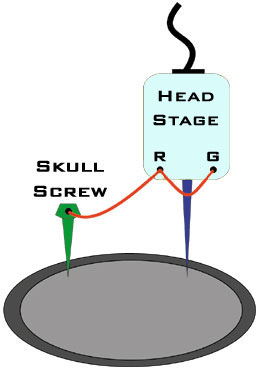
When using a single headstage with a shared ground and reference, the ground and reference pins of the headstage should be tied together. A ground is used and attached to a skull screw. All recordings will reference this connection. This configuration is referred to as "Single-Ended".
Single Headstage with a Separate Ground and Reference
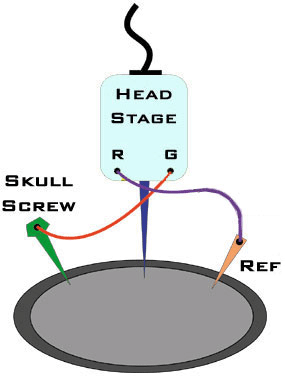
When using a single electrode with a separate ground and reference, it is important that the headstage itself is not single-ended, that is, its ground and reference pins are NOT tied together. This will allow the headstage to reference each channel to ground as well as an additional chosen site on the subject. This configuration is referred to as "Referential".
Multiple Headstage Configurations
Note
All headstages must use the same Ground wire. But not all headstages need to use the same Reference wire.
Multiple Headstages with a Shared Ground or Reference
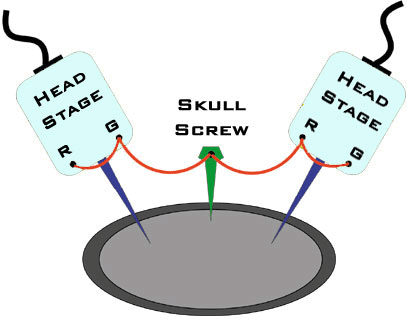
When using multiple headstages with a shared ground or reference, the ground and reference pins of each headstage should be tied together. A ground is used and attached to a skull screw. This ground is used by all headstages and ensures the headstages are referencing the same potential. This is a multiple single-ended configuration.
Multiple Headstages with a Single Ground and Multiple References
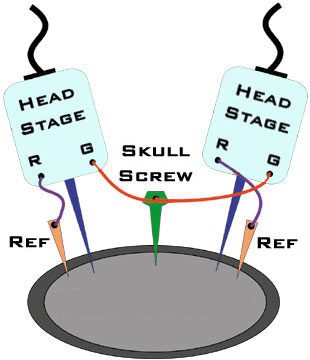
This configuration uses multiple referential headstages each with their own separate references. Notice that all the headstages' ground pin are tied together. This is a multiple referential configuration.
Multiple Headstages with a Shared Ground and different Ground/Reference configurations
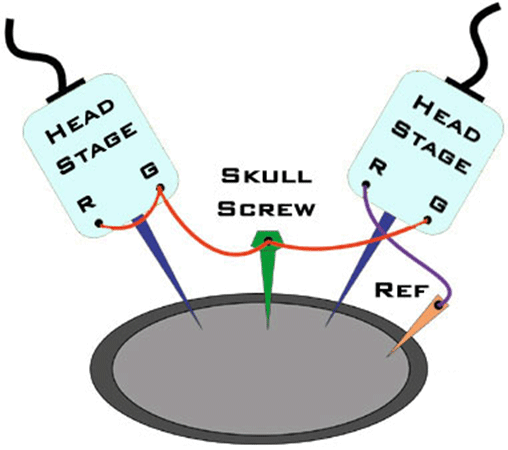
When using multiple electrodes with a shared ground and separate reference, all headstages' grounds are connected to the skull screw. A reference wire is present and connected to the desired headstage. This ensures all headstages have the same ground potential and provides a reference for the desired headstage. This is a hybrid configuration and uses a mixture of single-ended and referential headstages.
A Common Error to Avoid
When using multiple headstages a common error is to connect separate grounds for each headstage. This allows additional noise to corrupt signals increasing the number of artifacts present. To avoid this, ensure that all headstage ground pins are wired as a single ground.
Incorrect Configuration
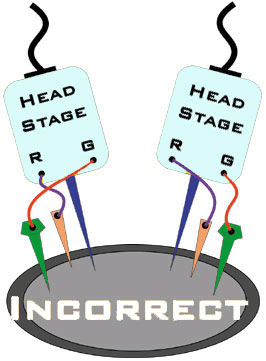
Both headstages are connected to a unique node for ground. This will introduce additional noise artifacts into the recordings.
Correct Configuration
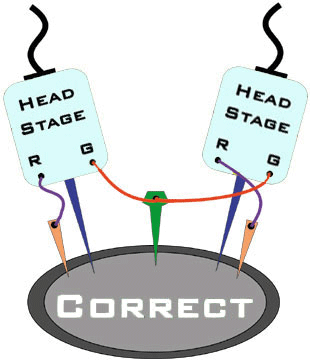
These headstages are correctly sharing a single node for ground. All headstages will be able to reference the same ground and will eliminate unnecessary noise artifacts from the recordings.